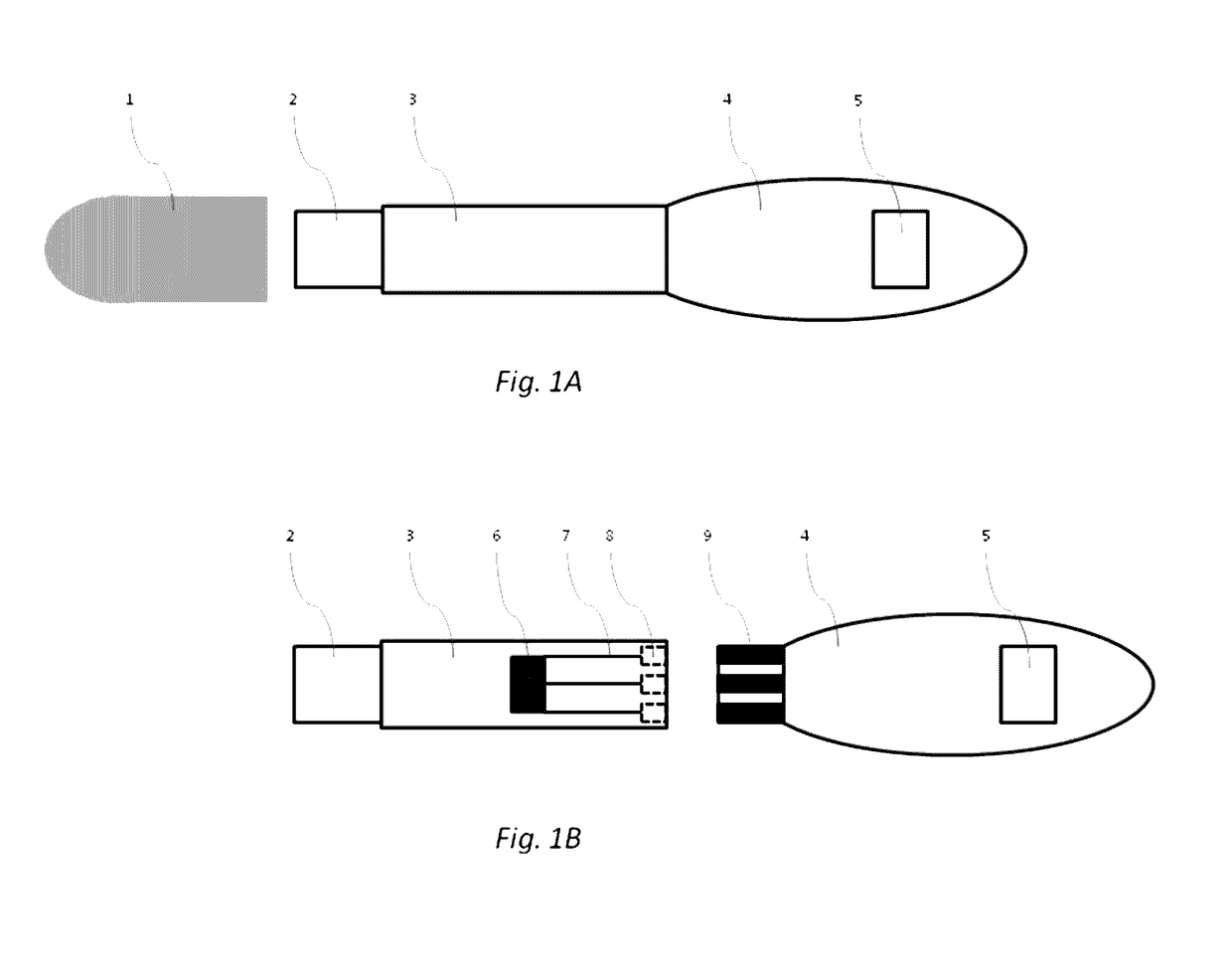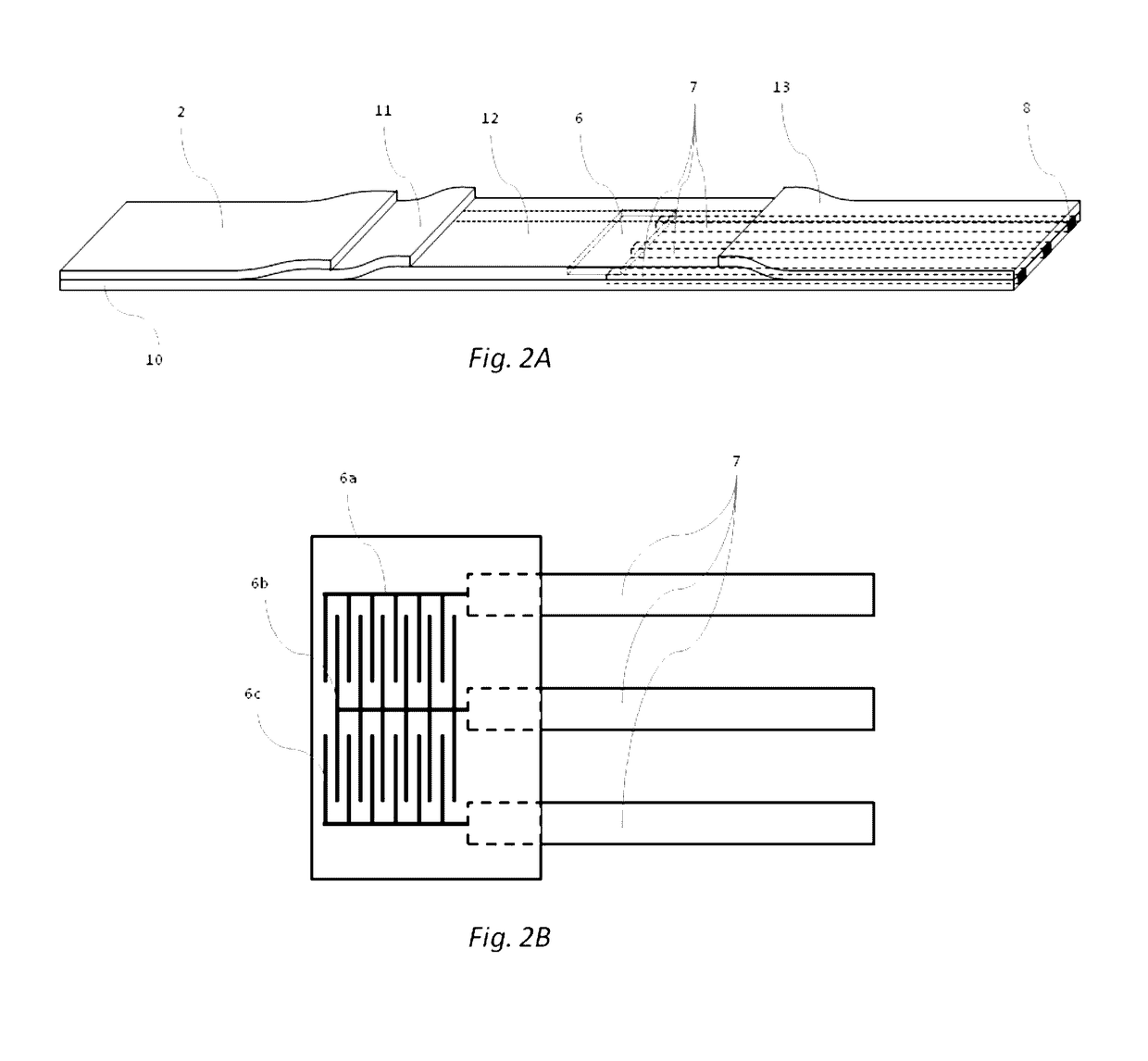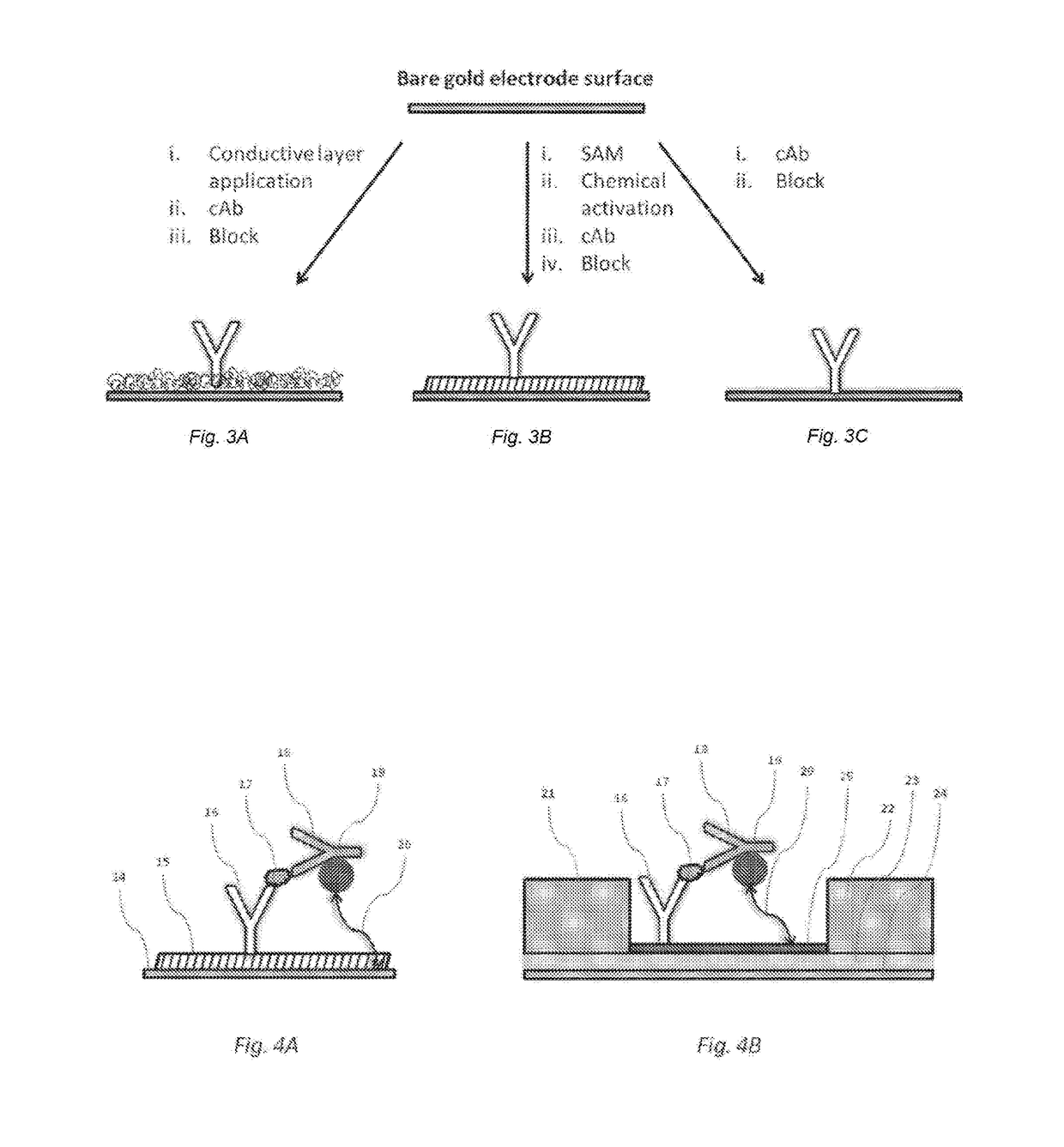Lateral Flow Diagnostic Devices with Integrated Electronic Components and Methods of Use Thereof
a technology of electronic components and diagnostic devices, applied in measurement devices, scientific instruments, instruments, etc., can solve problems such as limited wide-spread use, difficult test performance protocols, and compromise and user-dependent test accuracy and reproducibility
- Summary
- Abstract
- Description
- Claims
- Application Information
AI Technical Summary
Benefits of technology
Problems solved by technology
Method used
Image
Examples
Embodiment Construction
[0042]In some embodiments, the device of the present invention is configured to permit conducting an immunoassay for a specific analyte or set of analytes that are extracted from a biological sample or present in a biological fluid, such as blood, urine, saliva etc. In some embodiments, the device of the present invention integrates traditional lateral flow immunochromatographic assay technologies with those of electronic biosensors in a single apparatus, employing electroactive labels that act to amplify the change in impedance signal at a biosensor surface following detection reagent immobilization. Additionally, proper selection and construction of the electroactive label relative to the biosensor surface prevents non-specific contact between the two, promoting such interaction only upon the specific contact between the detection reagent, the analyte and the capture reagent. Such integration is expected to reduce the complexity of diagnostic test performance, while increasing tes...
PUM
| Property | Measurement | Unit |
|---|---|---|
| height | aaaaa | aaaaa |
| pore sizes | aaaaa | aaaaa |
| frequencies | aaaaa | aaaaa |
Abstract
Description
Claims
Application Information
 Login to View More
Login to View More - R&D
- Intellectual Property
- Life Sciences
- Materials
- Tech Scout
- Unparalleled Data Quality
- Higher Quality Content
- 60% Fewer Hallucinations
Browse by: Latest US Patents, China's latest patents, Technical Efficacy Thesaurus, Application Domain, Technology Topic, Popular Technical Reports.
© 2025 PatSnap. All rights reserved.Legal|Privacy policy|Modern Slavery Act Transparency Statement|Sitemap|About US| Contact US: help@patsnap.com



